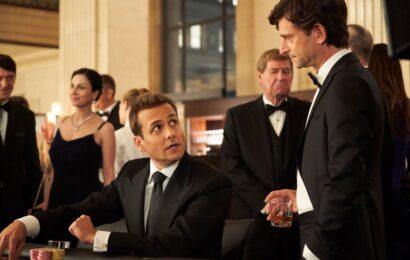“Words for an End of the World,” the third feature by Spain’s Manuel Menchón, continues his exploration of the towering figure of Miguel de Unamuno, also the subject of his prior fiction film, “The Island of Wind.” The documentary, however, covers new ground, embarks on a far more ambitious revisiting of Spain’s still not so distant past with a deep dive into a muddled history that for years has had just one interpretation that has simply been accepted as canon.
Unamuno, the great Spanish intellectual and analyst of Spain’s atavistic woes, was for decades regarded as the man who sided and funded the fascist coup led by Francisco Franco. With historical echoes that reverberate down to today’s political landscape, Unamuno’s final days have been increasingly revisited, most notably in Alejandro Amenabar 2019 “While at War.” Menchón’s documentary uses Unamuno, his position as head of Salamanca University and his death as centerpieces for a far wider revision of the Civil War.
Incorporating never-seen footage of the time, “Words for an End of the World” splashes its rich black and white cinematography with strokes of color a la Kurosawa’s “High and Low,” giving depth and gravitas to the events the Spanish nation survived – but not without trauma – last century.
It underscores, through enormous documentation and with piercing clarity to the fact that our understanding of the past should not be taken for granted: We should always question who is writing history deemed true.
Produced by Pantalla Partida, RTVE and Imagine! Factory Films; voiced by renowned actors such as José Sacristán (“Magical Girl”) and Antonio de la Torre (“The Endless Trench”), the film quickly became a hit at Spanish theaters last year and is currently looking for international distributors. Variety
The images of the film play with different formats and gives a near physical presence to key documents. How did you decide on the look of the film?
The film had to be analogical. It had to show the documents and make them feel cinematographic. That was the greatest challenge, because of course the archive material is inevitably cinematographic but the photos, documents, press clippings are not. Also, the filmed image in some way, always has an element of propaganda to it, never shows reality. The cameraman, when he was filming, shows only a slice of reality. It seemed fit to respect its 4:3 ratio that in itself already boxes and limits the overall vision of the viewer. Expanding it to 16:9 when filming the documents widens our perspective while giving it a certain physicality. It was vital that what viewers see is a real document, that it exists, that you can almost touch it.
In addition to how the film looks, there’s a very clear treatment of the sound which highlights thematic ideas -a flag waving in the distance has a crisp sound as it moves through the air. How was your approach when developing the sound design?
We worked on sound as hard as we did on the image. In fact it took a whole year to develop. To start with because all the archive material had no audio and I was very keen on linking the past to the present. Through electronic sounds we make a breach between them in a subliminal manner. On one hand having very clean, orderly sounds that felt millimetric to then enter the terrain of hardcore abstraction, of chaos, terror and dissonance. Many of the chants heard – people shouting “Long live Franco! Long live death! Long live Spain!” those are from present-day Spain. I recorded them during Franco’s exhumation and at other meetings that I won’t mention. You wonder how is it possible that this is happening in 21st century Spain. All the slogan shouts that you hear are from today.

How was the research process regarding the archive material?
I didn’t really want to watch archive material of the Civil War that we Spaniards have already seen. It’s propagandistic material from either the Falange, Franco’s supporters, or the Republic’s CNT workers union. I wanted to avoid that vision in the film. Most of the historical footage comes from the Spain’s Filmoteca and from personal archives of film amateurs from the time. I found a list of people who owned a Pathé Baby camera- the super 8mm of its time- in the ‘20s and ‘30s, contacted them or their descendants and got hold of their films of that period. Films that had never been seen before.
After looking back at history that defines your country, how do you observe your present?
It worries me a lot. It worries me how the manipulation of information – what now is being called fake news from an extreme right wing – is sinking in and how difficult it becomes to dismantle a lie. Whatever happens in the future, those lies remain, as they did in the past, transforming our understanding of it. Equally preoccupying is how the far right has taken over narratives on social media, which seems perfectly built for that.You cannot understand reality in 140 characters. To dismantle a lie in social media has become nearly impossible. I’ve encountered this myself making the film. I see myths of our past in which there are official documents, forensic and legal statements, lawyers who have analyzed the documentation and deemed them accurate and there are still people who question this scientific evidence.
Read More About:
Source: Read Full Article







